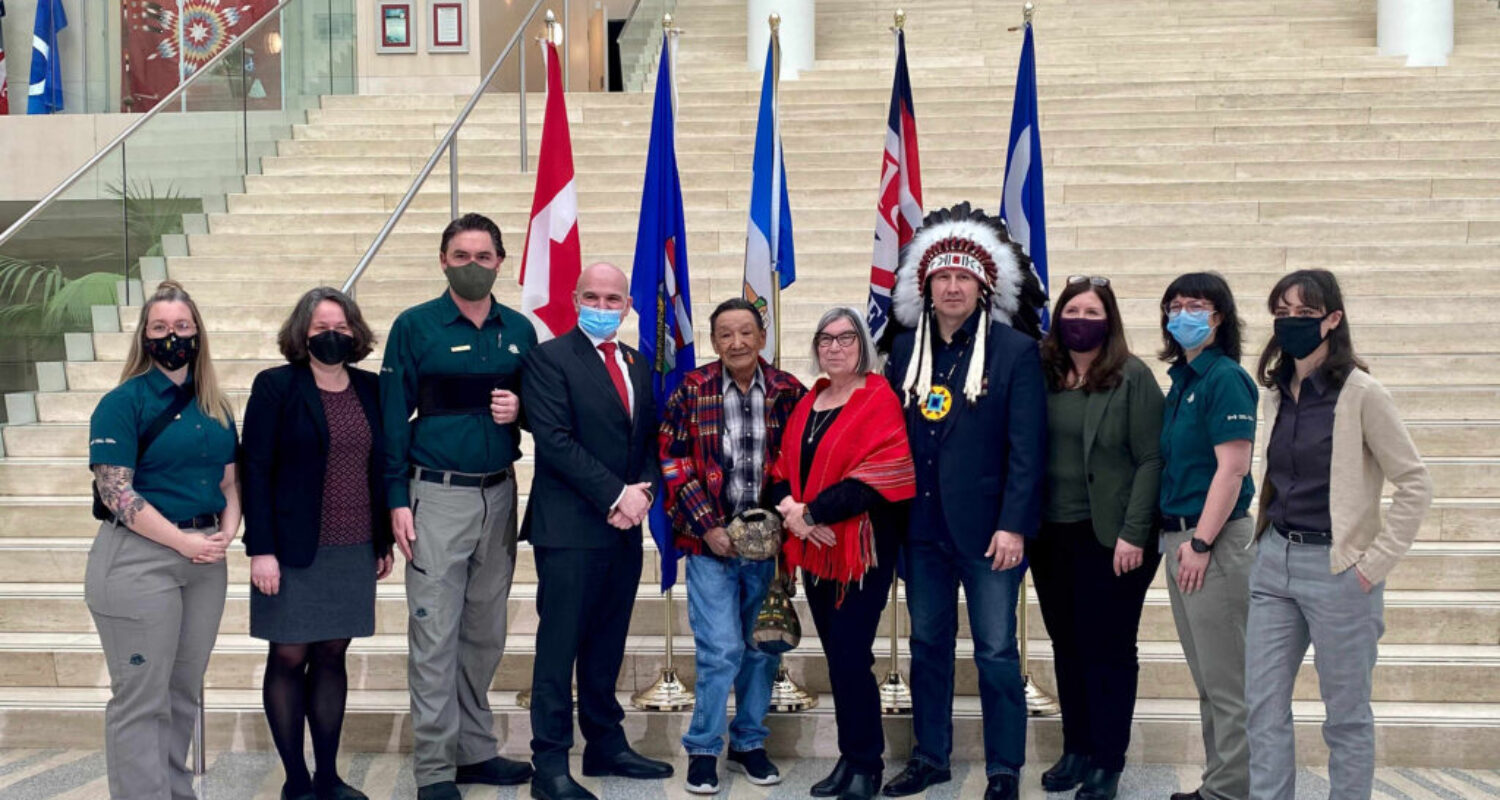CPAWS Northern Alberta celebrates early step towards a National Urban Park in the Edmonton region

March 14, 2022
CPAWS Northern Alberta is excited to have attended an announcement today by Parks Canada (see Parks Canada release), the Minister of Environment and Climate Change Canada, the Minister of Tourism Canada, the City of Edmonton, the Confederation of Treaty 6 First Nations, and the Métis Nation of Alberta on a partnership for the creation of a National Urban Park in the greater Edmonton region.
CPAWS Northern Alberta and our collaborators strongly support this early step towards additional protections and celebration of our river valley and ravines. National Urban Parks can provide a plethora of benefits to nature, climate, and people. This includes the protection of biodiversity-rich areas, rare habitats, and species at risk. Urban protected areas provide excellent opportunities to utilize our natural environment to help mitigate the effects of climate change as well as help species adapt by improving landscape connectivity.
When partnerships are forged early in the process, as is the case here, urban protected areas are an opportunity to advance reconciliation with Indigenous Peoples and support Indigenous-led conservation. Urban protected areas can also improve access to nature for communities historically under-represented in outdoor spaces, provide ample benefits to our health, mental and physical well-being, offer people a sense of place, and help bring families together while also defining a city’s identity.
CPAWS Northern Alberta looks forward to working with a wide variety of stakeholders to see this vision of a National Urban Park in the North Saskatchewan River Valley come to fruition. We envision a connected natural space that will enhance the ecological values of the region, support native species, help buffer the impacts of climate change, and be enjoyed by all.
Why a National Urban Park and who will benefit?
The North Saskatchewan River Valley and Ravine System in the greater Edmonton region is an outstanding natural feature often called “the largest urban open space in North America”. The Edmonton Metropolitan Region offers components for a National Urban Park similar to Rouge National Urban Park, formed in 2011, such as a beautiful river corridor, significant Indigenous and non-Indigenous historical and cultural sites, valuable agricultural lands, a metropolitan region of several interested municipalities, conservation organizations, clubs, recreationists, parks and nature lovers, outdoor sport enthusiasts, farmers, and significant biodiverse characteristics and assets unique in the province. Similar to the formation of Rouge National Urban Park, First Nations and Métis organizations that have either collaborated in protecting aspects of the River Valley or that express an interest in such a collaboration will be consulted and intrinsic to the realization of the park.
Precedents: Canada’s First National Urban Park
Canada’s first National Urban Park was Rouge National Urban Park in 2011. It has been highly popular and successful for the Toronto region. Currently Rouge National Urban Park is nearly 80 km² and involves the Regional Municipalities of York and Durham, and three cities namely Toronto, Markham, and Pickering, with the Toronto and Region Conservation Authority (a land trust), and the governments of Ontario and Canada. It also includes private farmland and the Bead Hill National Historic Site. It functions under its own legislation as a green landscape popular for health, recreation, conservation, tourism, and agriculture. It is open to users without charge, accessible by transit and vehicles as well as non-motorized means, and features trails, recreation facilities, and visitor amenities, and hosts festivals, events, camping, and programs, also encouraging social inclusion and Indigenous leadership.
For more information:
Take Action
Share your support for National Urban Parks
Email your MLA to let them know you support National Urban Parks and would like to see Alberta be a part of a national network of urban parks.
STAY INFORMED
Protect the Wilderness
To receive news and updates from CPAWS Northern Alberta, including opportunities to get involved, join our mailing list below.
